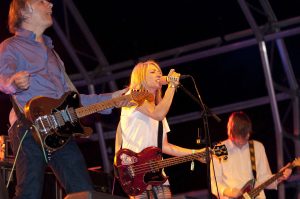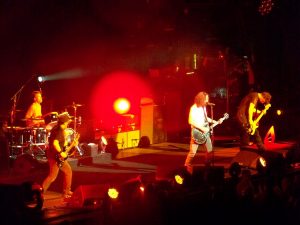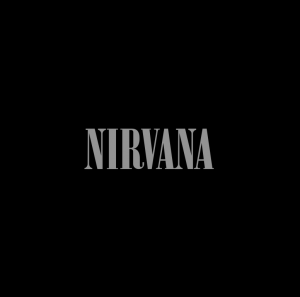1.21: Alternative Rock
- Page ID
- 168931
\( \newcommand{\vecs}[1]{\overset { \scriptstyle \rightharpoonup} {\mathbf{#1}} } \)
\( \newcommand{\vecd}[1]{\overset{-\!-\!\rightharpoonup}{\vphantom{a}\smash {#1}}} \)
\( \newcommand{\dsum}{\displaystyle\sum\limits} \)
\( \newcommand{\dint}{\displaystyle\int\limits} \)
\( \newcommand{\dlim}{\displaystyle\lim\limits} \)
\( \newcommand{\id}{\mathrm{id}}\) \( \newcommand{\Span}{\mathrm{span}}\)
( \newcommand{\kernel}{\mathrm{null}\,}\) \( \newcommand{\range}{\mathrm{range}\,}\)
\( \newcommand{\RealPart}{\mathrm{Re}}\) \( \newcommand{\ImaginaryPart}{\mathrm{Im}}\)
\( \newcommand{\Argument}{\mathrm{Arg}}\) \( \newcommand{\norm}[1]{\| #1 \|}\)
\( \newcommand{\inner}[2]{\langle #1, #2 \rangle}\)
\( \newcommand{\Span}{\mathrm{span}}\)
\( \newcommand{\id}{\mathrm{id}}\)
\( \newcommand{\Span}{\mathrm{span}}\)
\( \newcommand{\kernel}{\mathrm{null}\,}\)
\( \newcommand{\range}{\mathrm{range}\,}\)
\( \newcommand{\RealPart}{\mathrm{Re}}\)
\( \newcommand{\ImaginaryPart}{\mathrm{Im}}\)
\( \newcommand{\Argument}{\mathrm{Arg}}\)
\( \newcommand{\norm}[1]{\| #1 \|}\)
\( \newcommand{\inner}[2]{\langle #1, #2 \rangle}\)
\( \newcommand{\Span}{\mathrm{span}}\) \( \newcommand{\AA}{\unicode[.8,0]{x212B}}\)
\( \newcommand{\vectorA}[1]{\vec{#1}} % arrow\)
\( \newcommand{\vectorAt}[1]{\vec{\text{#1}}} % arrow\)
\( \newcommand{\vectorB}[1]{\overset { \scriptstyle \rightharpoonup} {\mathbf{#1}} } \)
\( \newcommand{\vectorC}[1]{\textbf{#1}} \)
\( \newcommand{\vectorD}[1]{\overrightarrow{#1}} \)
\( \newcommand{\vectorDt}[1]{\overrightarrow{\text{#1}}} \)
\( \newcommand{\vectE}[1]{\overset{-\!-\!\rightharpoonup}{\vphantom{a}\smash{\mathbf {#1}}}} \)
\( \newcommand{\vecs}[1]{\overset { \scriptstyle \rightharpoonup} {\mathbf{#1}} } \)
\( \newcommand{\vecd}[1]{\overset{-\!-\!\rightharpoonup}{\vphantom{a}\smash {#1}}} \)
\(\newcommand{\avec}{\mathbf a}\) \(\newcommand{\bvec}{\mathbf b}\) \(\newcommand{\cvec}{\mathbf c}\) \(\newcommand{\dvec}{\mathbf d}\) \(\newcommand{\dtil}{\widetilde{\mathbf d}}\) \(\newcommand{\evec}{\mathbf e}\) \(\newcommand{\fvec}{\mathbf f}\) \(\newcommand{\nvec}{\mathbf n}\) \(\newcommand{\pvec}{\mathbf p}\) \(\newcommand{\qvec}{\mathbf q}\) \(\newcommand{\svec}{\mathbf s}\) \(\newcommand{\tvec}{\mathbf t}\) \(\newcommand{\uvec}{\mathbf u}\) \(\newcommand{\vvec}{\mathbf v}\) \(\newcommand{\wvec}{\mathbf w}\) \(\newcommand{\xvec}{\mathbf x}\) \(\newcommand{\yvec}{\mathbf y}\) \(\newcommand{\zvec}{\mathbf z}\) \(\newcommand{\rvec}{\mathbf r}\) \(\newcommand{\mvec}{\mathbf m}\) \(\newcommand{\zerovec}{\mathbf 0}\) \(\newcommand{\onevec}{\mathbf 1}\) \(\newcommand{\real}{\mathbb R}\) \(\newcommand{\twovec}[2]{\left[\begin{array}{r}#1 \\ #2 \end{array}\right]}\) \(\newcommand{\ctwovec}[2]{\left[\begin{array}{c}#1 \\ #2 \end{array}\right]}\) \(\newcommand{\threevec}[3]{\left[\begin{array}{r}#1 \\ #2 \\ #3 \end{array}\right]}\) \(\newcommand{\cthreevec}[3]{\left[\begin{array}{c}#1 \\ #2 \\ #3 \end{array}\right]}\) \(\newcommand{\fourvec}[4]{\left[\begin{array}{r}#1 \\ #2 \\ #3 \\ #4 \end{array}\right]}\) \(\newcommand{\cfourvec}[4]{\left[\begin{array}{c}#1 \\ #2 \\ #3 \\ #4 \end{array}\right]}\) \(\newcommand{\fivevec}[5]{\left[\begin{array}{r}#1 \\ #2 \\ #3 \\ #4 \\ #5 \\ \end{array}\right]}\) \(\newcommand{\cfivevec}[5]{\left[\begin{array}{c}#1 \\ #2 \\ #3 \\ #4 \\ #5 \\ \end{array}\right]}\) \(\newcommand{\mattwo}[4]{\left[\begin{array}{rr}#1 \amp #2 \\ #3 \amp #4 \\ \end{array}\right]}\) \(\newcommand{\laspan}[1]{\text{Span}\{#1\}}\) \(\newcommand{\bcal}{\cal B}\) \(\newcommand{\ccal}{\cal C}\) \(\newcommand{\scal}{\cal S}\) \(\newcommand{\wcal}{\cal W}\) \(\newcommand{\ecal}{\cal E}\) \(\newcommand{\coords}[2]{\left\{#1\right\}_{#2}}\) \(\newcommand{\gray}[1]{\color{gray}{#1}}\) \(\newcommand{\lgray}[1]{\color{lightgray}{#1}}\) \(\newcommand{\rank}{\operatorname{rank}}\) \(\newcommand{\row}{\text{Row}}\) \(\newcommand{\col}{\text{Col}}\) \(\renewcommand{\row}{\text{Row}}\) \(\newcommand{\nul}{\text{Nul}}\) \(\newcommand{\var}{\text{Var}}\) \(\newcommand{\corr}{\text{corr}}\) \(\newcommand{\len}[1]{\left|#1\right|}\) \(\newcommand{\bbar}{\overline{\bvec}}\) \(\newcommand{\bhat}{\widehat{\bvec}}\) \(\newcommand{\bperp}{\bvec^\perp}\) \(\newcommand{\xhat}{\widehat{\xvec}}\) \(\newcommand{\vhat}{\widehat{\vvec}}\) \(\newcommand{\uhat}{\widehat{\uvec}}\) \(\newcommand{\what}{\widehat{\wvec}}\) \(\newcommand{\Sighat}{\widehat{\Sigma}}\) \(\newcommand{\lt}{<}\) \(\newcommand{\gt}{>}\) \(\newcommand{\amp}{&}\) \(\definecolor{fillinmathshade}{gray}{0.9}\)Hüsker Dü
Hüsker Dü began in 1979 as a punk group but pioneered a style that blended punk energy with a pop oriented melodic sound. Remember, originally punk music more often had monotone vocal lines, shouted or screamed. This blend of high energy, aggressive punk with a highly melodic sensibility became the basis for ‘alternative’ rock and ‘pop punk’ that gained popularity in the 1990s. Husker Du served as an important influence on alternative rock groups such as Nirvana. They used heavy guitar sounds (called “buzzsaw”), pounding drums, fast tempos, and melodic vocals. The group disbanded in 1987.
Examine the lyrics to the song “Makes No Sense at All” by Hüsker Dü and try to identify the form.
It makes no sense at all
Sell yourself short, but you’re walking so tall
It makes no sense at all
It makes no sense at all
Walking around with your head in the clouds
It makes no sense at all
Makes no difference at all
Yeah, it makes no sense at all
Makes no difference at all
When I’m right or when I’m wrong
It’s the same thing, in your mind,
The only time I’m right is when I play along
When I play along
It makes no sense at all
Sell yourself short, but you’re walking so tall
It makes no sense at all
It makes no sense at all
Walking around with your head in the clouds
It makes no sense at all
Makes no difference at all
Yeah, it makes no sense at all
Makes no difference at all
It’s evident to me
Well you say you’ve got the tiger by the tail
But I don’t see these things that way
See these things that way
It makes no sense at all
Sell yourself short, but you’re walking so tall
It makes no sense at all
It makes no sense at all
Walking around with your head in the clouds
It makes no sense at all
Makes no difference at all
Yeah, it makes no sense at all
Makes no difference at all
It makes no sense at all
Sonic Youth

The roots of grunge music can be found in the group Sonic Youth from New York, formed in 1981. They experimented with electronics, alternate guitar tunings, and prepared instruments where they placed different items such as screws into the strings of their guitars to achieve unique timbres. Layers of feedback and dissonances were used by the group’s guitarists Lee Ranaldo and Thurston Moore. They helped promote the grunge movement by letting those groups play opening performances for them. Their noise rock sound and DIY approach was influenced by punk music and pointed the way toward grunge.
As the band grew, they began incorporating more melodic material and standard song forms into there music, all the while retaining the unusual and experimental instrumental sounds they are known for. The album Sister (1987) successfully displayed this new approach. “Kotton Crown” features a simple melody that repeats over and over, echoing a guitar line.
Throughout, unusual guitar sounds float through the background. Soon after the release of Sister, the group was signed to a major label and their popularity continued to grow. After 30 years as a group, the band went on hiatus in 2011.
The Pixies

The Pixies, along with Hüsker Dü, were one of the earliest “alternative rock” groups that established the sound that groups like Nirvana would later develop. They formed in Boston in 1986, and broke up in 1993. They regrouped in 2004 after gaining much popularity throughout the 1990s and perform world tours with sell out shows. The group combines punk, new wave, surf, and other styles along with large dynamic shifts from soft to loud and vice versa. “Monkey Gone to Heaven” shows a mix of monotone punk style vocals in the quiet Verse or A section (the vocals in this section sound quite similar to the proto-punk vocal style of the Velvet Underground), while the Chorus or B section features a melodic vocal line and the instruments play louder and more intensely. The loud-soft dynamic contrast featured here is a common thread through much of the Pixies music, and would serve as an influence on bands that came after, including Nirvana. Lyrically, the song is a commentary on pollution and the human impact on the environment.
Listening Examples 21.1
Husker Du: “Makes No Sense At All”
Sonic Youth: Notice how the guitars are creating an unorthodox layer of sound/noise as accompaniment for the shouting vocals instead of standard chords/riffs in “Brother James” from Kill Yr Idols (1983). Now listen to “Cotton Crown” from Sister (1987).
The Pixies:“Gigantic” makes use of the soft-loud-soft-loud form later heavily used by Nirvana and other “grunge” groups. This dynamic contrast is most often a feature that ties in with Verse-Chorus form. Most often in alternative music, the Verse is featured at a soft dynamic, then the chorus kicks in with a sudden dynamic shift to very loud. Now listen to “Monkey Gone to Heaven”.
Finally,I demonstrate one simple way to “prepare” a guitar: I put some guitar picks in the strings. I show the sound without any effects first, then I turn on a few effects processors.
Industrial Metal
Industrial metal began in England in the late 1970s and soon made its way to the U.S. It represents an extension of the punk movement in that they felt that there were “intrusive controls on every aspect of their lives” by the government. Musically the genre features an extensive amount of noise that was layered in different textures. In addition to distorted guitars and other distorted drones, synthesizers were often used.
Ministry and Nine Inch Nails
Ministry formed in Chicago in the early 1980s, and became one of the most successful industrial groups with their 1992 album Psalm 69 which went platinum. The sound features heavy metal style guitar riffs, sampled audio, and synthesizers. Lyrically the group is often critical of modern society and religion. Vocally, singer Al Jorgensen often chants or screams vocals through electronic processing to further distort the timbre of his voice.

Nine Inch Nails formed in 1988 under the direction of singer/songwriter/instrumentalist/producer Trent Reznor who remains the group’s only official member. NIN incorporates synthesizers, sampled audio, electronic and live drums, and distorted guitars. Lyrically the song themes are often “tortured, angry, and alienated.” Vocally, Reznor incorporates melodic vocals into the aggressive timbre of the music, adding an element of pop in which listeners are drawn in a little more easily than the music of a group like Ministry. Both groups also became fixtures on the annual Lollapalooza festival, the most important festival in the early 1990s alternative rock scene. In the song “Head Like a Hole” by Nine Inch Nails (from the debut album Pretty Hate Machine, 1989) we see a further development on the standard verse-chorus song form where the chorus is drawn out into three distinct parts (the verse is fairly short). Part 1 could be considered a prechorus, but parts 2 and 3 are distinctly “Chorus-like” in that part 1 seemed to resolve into them.
Verse
God money I’ll do anything for you.
God money just tell me what you want me to.
God money nail me up against the wall.
God money don’t want everything he wants it all.
Chorus
Part 1
no you can’t take it
no you can’t take it
no you can’t take that away from me
no you can’t take it
no you can’t take it
no you can’t take that away from me
Part 2
head like a hole.
black as your soul.
I’d rather die than give you control.
head like a hole.
black as your soul.
I’d rather die than give you control.
Part 3
bow down before the one you serve.
you’re going to get what you deserve.
bow down before the one you serve.
you’re going to get what you deserve.
Verse
God money’s not looking for the cure.
God money’s not concerned with the sick amongst the pure.
God money let’s go dancing on the backs of the bruised.
God money’s not one to choose
(Chorus)
Listening Examples 21.2
Ministry: “Stigmata”
Nine Inch Nails: “Head Like a Hole”
Grunge
The term “grunge” is an umbrella term loosely applied to the alternative rock groups that came out of Seattle in the late 1980s-early 1990s. The term lumps together groups that exhibit very different musical characteristics from one another. In general, though, Grunge groups tend to have high energy, aggressive sounding music in the punk and metal realms, and a dark/somewhat melancholy lyrical approach.
Soundgarden

Soundgarden formed in Seattle, Washington in 1984 and became one of the early “grunge” bands to gain a strong following. They took the influence of heavy metal style vocals, and incorporated loud crunching guitars. The guitar approach is riff based and influenced by heavy metal as well. The group was the first of the Seattle-based “grunge” groups to sign with a major record label A&M. With the release of Superunknown in 1994, Soundgarden gained their biggest success. The album was a hit on the pop charts and gained two Grammy awards for the songs “Black Hole Sun” and “Spoonman”. Soundgarden inspired other grunge bands such as Mudhoney and Nirvana.
Nirvana

Nirvana formed in Aberdeen, Washington in 1987 and went on to become the most popular grunge group of the early 1990s. Their sound combined elements of punk with the melodic sensibility of groups such as the Pixies and Husker Du. They had a hit single with “Smells Like Teen Spirit” off their second album Nevermind (1991). This album was immensely popular and brought alternative rock into the mainstream. The MTV Unplugged performance in 1993 showcased a new side of the band as they performed a more dynamically subtle concert that showed their music could stand strongly without the use of extreme volume. Cobain had trouble with the idea of fame and feared that the band’s anti-establishment messages were being overshadowed by their popularity. He took his own life in 1994.
“Sliver” was originally released as a single in 1990 (before the group was internationally famous) and showcases the soft-loud verse-chorus approach inspired by The Pixies and found in later songs such as “Smells Like Teen Spirit”. In the case of “Sliver” however, each verse becomes louder and more musically intense than the previous verse, until the verse actually becomes more intense than the chorus itself.
Listening Examples 21.3
Soundgarden: “Spoonman”
Nirvana:
- “Smells Like Teen Spirit”
- “Sliver”
- “Come As You Are” from the MTV Unplugged performance in 1993. Notice the wide range of the vocal melody over top of the simple accompaniment. The melodies are more apparent in the overall mix of instruments in the minimal and delicate environment of the acoustic set.
Pearl Jam
Pearl Jam formed in Seattle in 1990 and entered the mainstream music scene with their debut album Ten in 1991. Their sound was guitar-based with riffs and elements of punk, acoustic music, blues, and psychedelic rock. The vocals of Eddie Vedder were dramatic and passionate and he often sang of intense, personal topics such as depression, suicide, and loneliness. They were at first accused of trying to cash in on the popularity of grunge but have since been noted for refusing certain music industry practices such as letting Ticketmaster control their ticket prices. The group became increasingly uncomfortable with success and began refusing to make music videos, which by the early 1990s had become the most important method of promotion.
Alice in Chains

Alice in Chains formed in Seattle in 1987, and became one of the most popular “grunge” bands of the 1990s, along with Soundgarden, Nirvana, and Pearl Jam. The primary songwriters were Layne Staley (vocals) and Jerry Cantrell (vocals and guitar). Although categorized as “grunge” or alternative rock, the band’s sound does not fit these categories. The sound is more identifiable as heavy metal, though they perform acoustic music and use melodic vocals. One of the most distinctive elements of the group are the harmonized vocals of Layne Staley and guitarist Jerry Cantrell. They often used atypical intervals for their vocal harmonies that added musical depth and a dark, eerie quality to their sound.
Their 1992 album Dirt has become quadruple platinum, and their albums Jar of Flies (1994) and Alice in Chains (1995) both debuted at No. 1 on the Billboard pop charts. After an MTV Unplugged appearance in 1996, the band’s activities dropped off likely due to Staley’s drug addiction. He died in 2002, and the band has since reformed with a new vocalist and continues to tour.
Listening Examples 21.4
Pearl Jam: “Alive”
Alice in Chains:“Rooster” perfectly showcases the dark, eerie yet melodic style of Alice in Chains. Lyrically the song references the experiences in the Vietnam War of Jerry Cantrell’s father. This song features and extended quiet introduction that finally erupts into a heavy sounding section.


